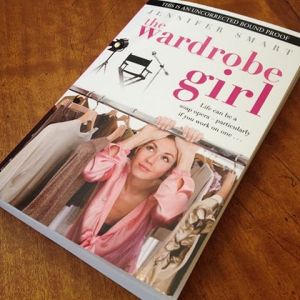Novellist, Toni Jordan* describes writers as ‘Knitters or Quilters.’ There are the writers, like me who ‘cast on’ their story at Chapter 1 and then knit/write their way to the end, ‘casting off’ only when they have finished the last chapter. Conversely, the ‘quilters’, write/quilt pieces and then sew/write the pieces to form blocks and then piece together again to form a whole. The editing process is mostly a quilting process.
I quite like a bit of nanna technology and can often have a couple of knitting or quilting projects on the go, so this analogy made perfect sense to me. I realised, that for me, the art of editing was going be learning how to quilt as a writer. How to move pieces/passages around the manuscript, creating new pieces and then pulling it all together.
But let’s go back a step. My publisher, Beverley Cousins at Random House, sent me through some very comprehensive notes about the manuscript – some general observations, detailed notes on particular scenes and points that needed clarification. She had also picked up typos, spelling and punctuation errors. This was all on a hard copy of the manuscript, marked up line by line, with an explanation of the squiggles she uses as shorthand.
For the next 6 weeks or so, these documents were my Bible.
I had a road map to follow and follow I did. Although I didn’t take on every suggestion, because there were some things I felt needed to stay. Now I could finally look at my work with fresh eyes. After the long process of writing, then rewriting and revising before I even submitted the manuscript, I’d reached a point where I’d fallen out of love with writing, my writing, my manuscript. I was re-energised. Yes, I was worried I might ruin the whole story, destroy all that work, but understand this: there is no rational basis for the terror that may descend at this point. all you can do is write through it. I know, it’s not fair.

Some pages look like this.

Other pages look more like this.
The revisions bring tough decisions. Some ‘darlings’ are killed off. Lines you’d waited for, hunted for, scrawled out, rewritten and fought for, are sent to the editing room floor. Characters must earn their place in the story and if they don’t, so long. Other characters begin to play a role you never anticipated for them, or become more sympathetic. It’s hard to change your characters, even their names (one of my supporting cast had his name changed 3 times). I love all my characters, even the ones I disliked. They all talked to me and gave me ideas, when I was quiet enough to listen.
Of course, some of the revision was ‘mechanical’. Correcting typos, punctuation, etc and that’s where I chose to start. I could do this straight onto the computer and it didn’t require a great deal of creative thought, but it did put me back in touch with the story. It allowed ideas to form and percolate.
Eventually, you have to do the writing! I wish there was a secret formula for that, but I’m still searching. And perhaps this is another example of my love of nanna technology, now I reach for my pen and paper, or my Moleskine books. I head off to The State Library of NSW and I write.

Writing – Stage 1 the nanna technology
And then I rewrite the revisions. But there’s more. The next step is entering it into the computer and there’s always some tweaking and tinkering done there. That’s printed off, and a final edit with pen and paper is done.

Eventually, I make it this far.
It’s not a quick process, but as Michael Crichton** says, ‘Books aren’t written, they’re rewritten’.
There is one final step, the most terrifying. You email your revisions back to your publisher and wait…
Actually, I’m wrong. The most terrifying moment is opening the return email from your publisher. Fortunately, Bev loved my revisions. Now my manuscript is off to the copy-editor. I’ll let you know how that goes.
*Toni Jordan is an Australian author of intelligent, funny, novels that some might call chick-lit. Click here for her Official Website
**Michael Crichton was a best-selling author extaordinaire, Jurassic Park is just one of his many books and creator of one my all time favourite TV shows, ER. Click here for his official Website.






